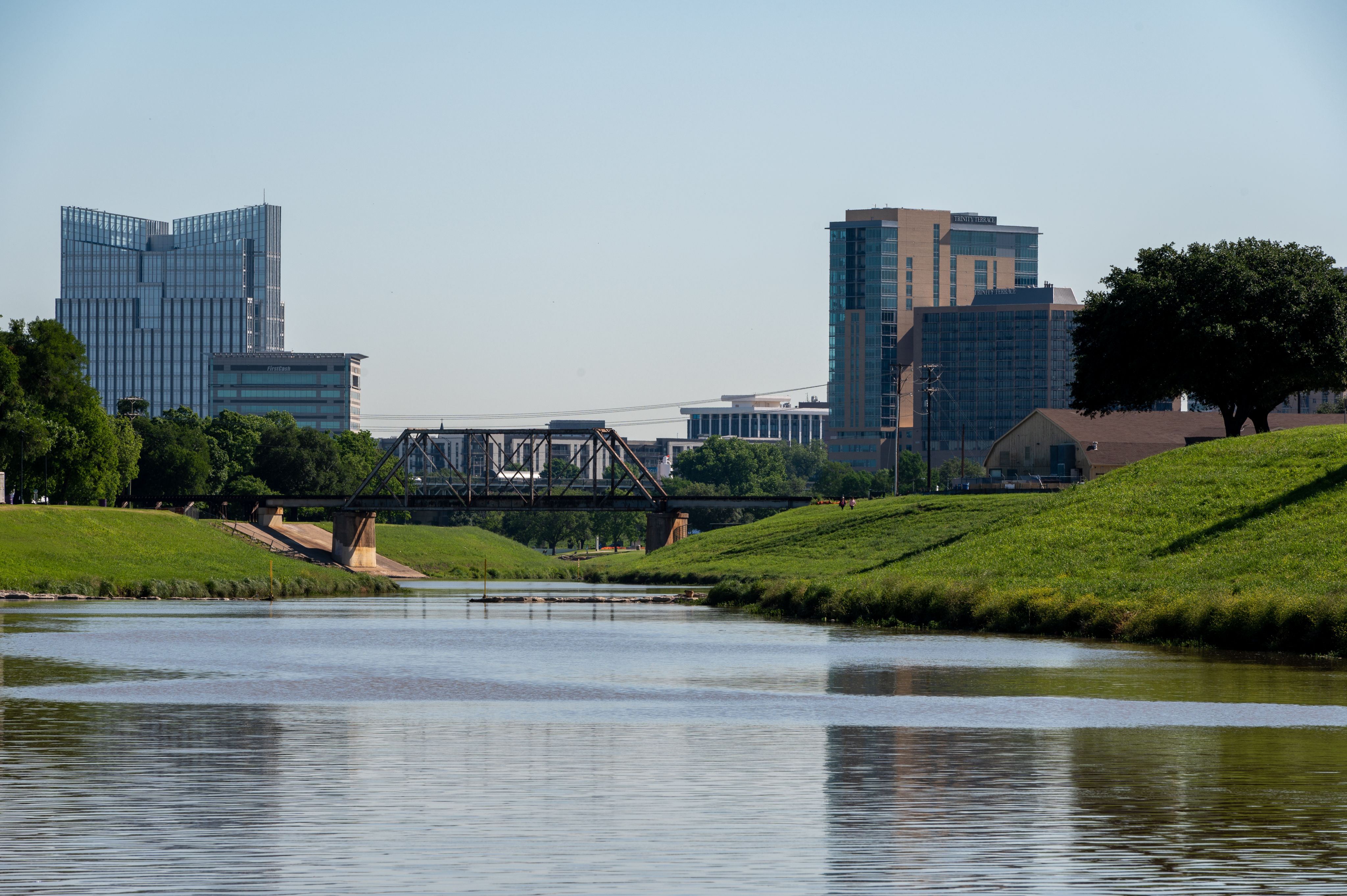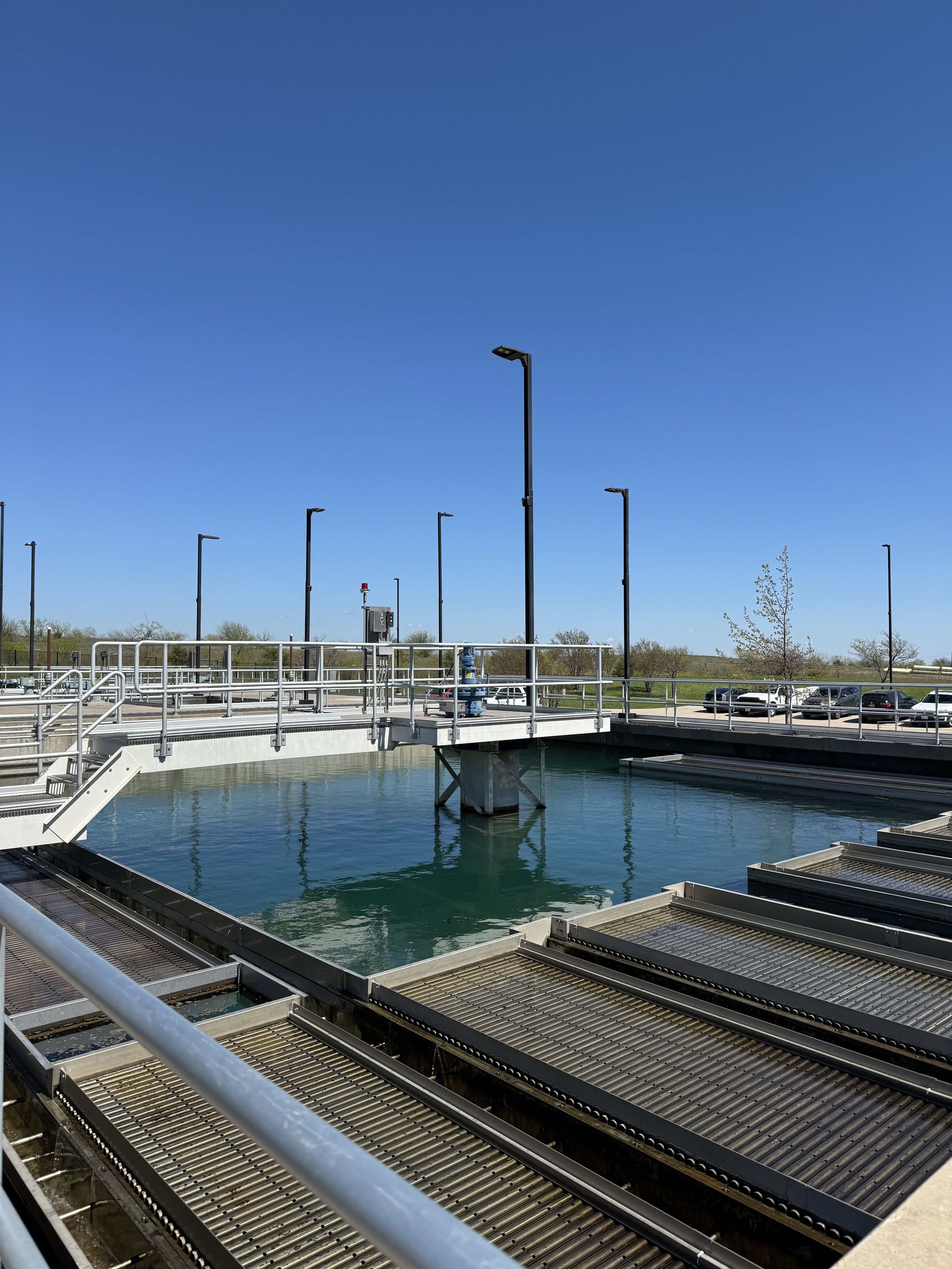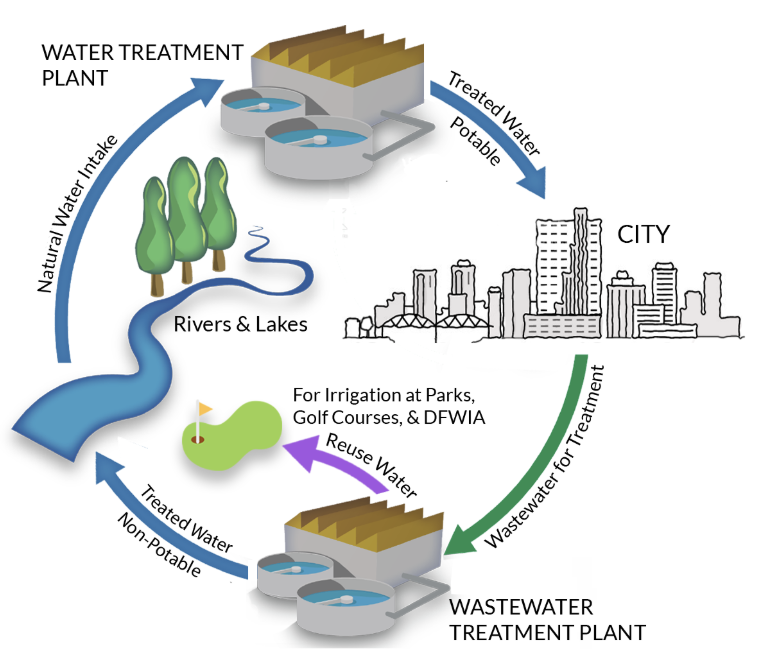Clear currents: Innovations and process of wastewater treatment
From raw water to drinking water

Overview
Managing waste water is key to maintaining a healthy water system. Wastewater treatment is a crucial part of the modern environmental pathway for fresh drinking water. Fort Worth's Village Creek Water Reclamation Facility uses purification processes — settling, filtration and biological activity — mirrors methods used in nature.
Wastewater quick process graph (Photo courtesy of the City of Fort Worth Water Department).
Wastewater quick process graph (Photo courtesy of the City of Fort Worth Water Department).
What Really Happens with Wastewater?
Fort Worth has several locations that treat wastewater.
Wastewater enters the Village Creek facility, or the Westside location, through two 90 to 96 inch sewer main. There's also a 66 inch main which is created for a gravity flow of two feet pers second.
The water is treated with chlorine at the beginning of the process for odor control.
“Wastewater then goes through the bar screens – a row of closely and evenly spaced bars across the influent channel (¾-inch openings). The bar screens remove large objects that could block pipes or damage equipment. Bars are cleaned periodically with a mechanical rake and the material removed is taken to a sanitary landfill.”
The lengthy process is meant to ensure the water is clean for customers.
Wastewater Process
When going through the wastewater treatment, there is quite the lengthy process. First, the wastewater goes through odor control, which is a high priority of the city.
“After passing through bar screens, the wastewater goes to the primary clarifiers,” said the city. Through this process, it allows for heavier solid materials to settle to the bottom.
Then goes the secondary treatment. “Village Creek uses conventional activated sludge as the heart of its treatment process. A biological treatment begins, which mimics the processes used by nature for purifying lakes and streams.”
In this process, the wastewater is mixed with rich bacteria known as “activated sludge” in large basins with compressed air which is fed in fine bubble diffusers.
This bacteria is known for eating the organic matter that is in the wastewater. The mixture of wastewater and sludge is transferred to final clarifiers, where gravity then takes apart microorganisms from wastewater.
Following with the effluent filtration, this allows for, “The remaining solids suspended in the wastewater are removed by the passing of the wastewater through multimedia filters composed of gravel, sand and anthracite coal.
Filters are cleaned periodically by “backwashing,” or sending clean water backward through the filter to flush out impurities,” the city stated.
With the backwash water, it is moved to a basin and fed with a constant rate to the backwash clarifier. Here the solids settle.
While touring the Westside Water Treatment Plant, we were shown these microbeads that help to filter the water.
However, if there is the slightest bit of a leak or any break in the filter, then the water has to be retested and they have to find where the leak is.
This goes for any part of the process of wastewater treatment. If at any point there is any problem with the process, the city goes and fixes the issue and reruns the water to make sure that it is safe for its customers.
However, each piece of equipment is always being checked throughout the day. Tests are run, leaks are checked, chemicals are measured, etc.
One of the main goals of the city’s responsibility for water is to make sure that in the end, the drinking water that is going to the customer’s location, is safe, drinkable and usable. If that means it takes time to run something again, they will do that.
Chlorination/Dechlorination is the next step. Here, “After effluent filtration, the wastewater enters the chlorine contact basins, where it is mixed with chlorine and held for 20 minutes for disinfection to occur. The chlorine kills most of the disease-causing viruses and bacteria that remain,” said the city.
However, as chlorine and its byproducts are toxic, sulfur dioxide is put into the mixture after chlorination to remove any remaining chlorine. After this is done, the wastewater looks just like drinking water and is sent to the Trinity River.
Once the process is completed, the City of Fort Worth then pumps the new clean drinking water to its customers in the surrounding cities and towns.
Fort Worth is constantly growing and is needing to think of a future plan and how they are going to be able to supply water to all their customers. On top of that, the city is making sure that wastewater is not being wasted. This means they are taking that water and going through a lengthy, and time consuming, process to make wastewater safe, usable and drinkable for its customers. However, one of Fort Worth's main priorities is making sure that wastewater is safe for their customers.

